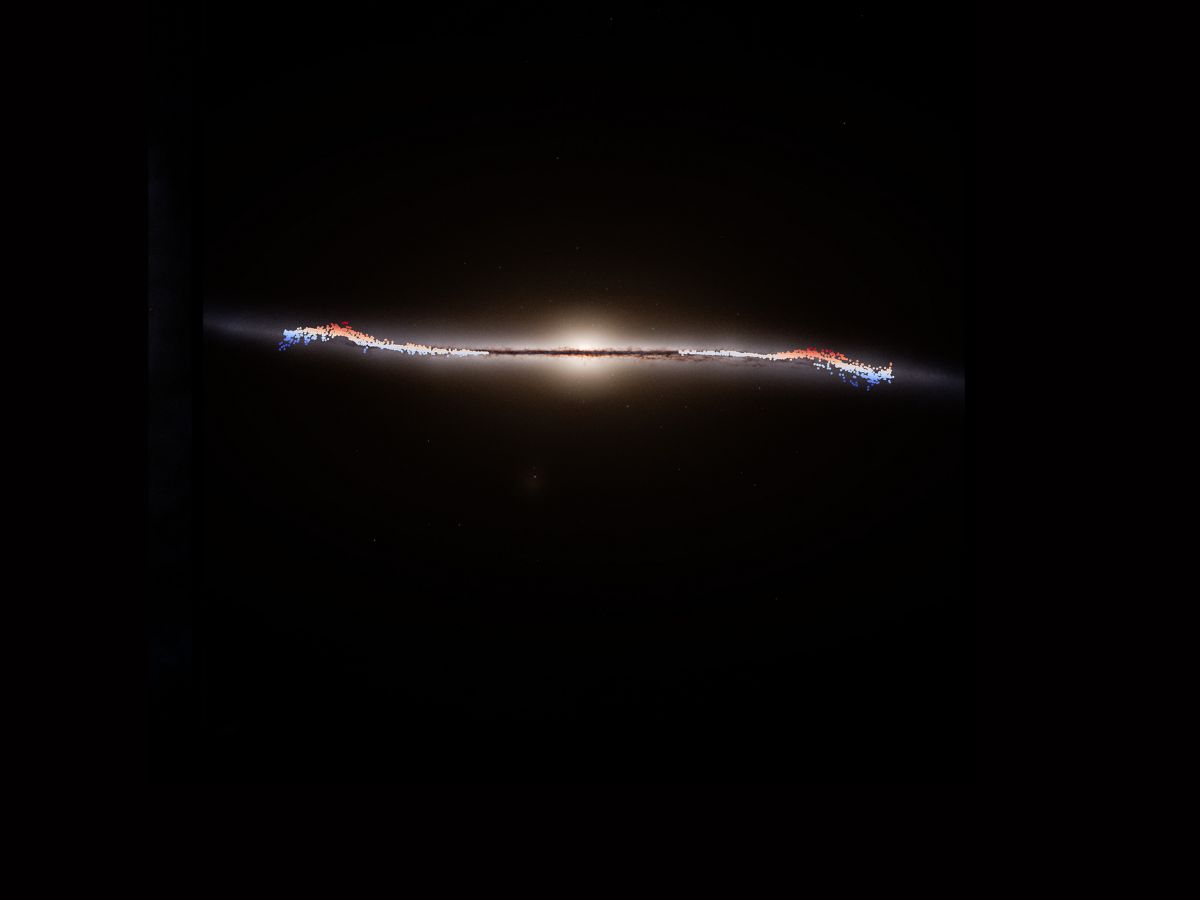Science
ESA Uncovers Massive Galactic Wave Likely from Collision

The European Space Agency (ESA) has detected a significant wave within the Milky Way, which scientists believe may have originated from a collision with a smaller galaxy. This discovery, made possible through the ESA’s Gaia mission, offers new insights into the dynamics of our galaxy and its interactions with neighboring celestial bodies.
According to ESA researchers, the wave appears as a large perturbation in the distribution of stars and other materials within the Milky Way. The phenomenon indicates that our galaxy is not a static entity but is continually shaped by gravitational influences from other galaxies. The findings were detailed in a study published in 2025, showcasing the advancements made in understanding galactic structures.
Details of the Discovery
The Gaia mission, launched in 2013, aims to create an extensive three-dimensional map of our galaxy. It monitors the positions and movements of stars with unprecedented precision. The recent detection of the wave is attributed to the analysis of data collected over several years. Researchers, including S. Payne-Wardenaar and E. Poggio, played crucial roles in interpreting the findings.
The wave spans a vast area of the Milky Way, suggesting a significant event in the galaxy’s history. This collision with a smaller galaxy could have occurred millions of years ago, yet its effects are still observable today. The researchers emphasize that such interactions are common in the universe, influencing the evolution of galaxies.
Implications for Galactic Research
This discovery has profound implications for our understanding of galactic formations and interactions. The wave may provide clues about the Milky Way’s past and offer a glimpse into the processes that govern galaxy mergers. By studying these waves, scientists can gain insights into the gravitational forces at play and how they affect star formation and distribution.
The findings underscore the value of the Gaia mission in advancing astronomical knowledge. The data collected not only enriches our understanding of the Milky Way but also enhances our grasp of the larger cosmic environment. As researchers continue to analyze the data, more revelations about the nature of our galaxy and its interactions with others are expected.
The ESA’s work in this area illustrates the importance of space exploration and the ongoing quest to uncover the mysteries of the universe. As technology improves and more data becomes available, the potential for new discoveries continues to expand.
-

 Technology4 months ago
Technology4 months agoDiscover the Top 10 Calorie Counting Apps of 2025
-

 Health2 months ago
Health2 months agoBella Hadid Shares Health Update After Treatment for Lyme Disease
-

 Health3 months ago
Health3 months agoErin Bates Shares Recovery Update Following Sepsis Complications
-

 Technology3 weeks ago
Technology3 weeks agoDiscover 2025’s Top GPUs for Exceptional 4K Gaming Performance
-

 Technology4 months ago
Technology4 months agoDiscover How to Reverse Image Search Using ChatGPT Effortlessly
-

 Technology2 months ago
Technology2 months agoElectric Moto Influencer Surronster Arrested in Tijuana
-

 Technology4 months ago
Technology4 months agoMeta Initiates $60B AI Data Center Expansion, Starting in Ohio
-

 Technology4 months ago
Technology4 months agoRecovering a Suspended TikTok Account: A Step-by-Step Guide
-

 Health4 months ago
Health4 months agoTested: Rab Firewall Mountain Jacket Survives Harsh Conditions
-

 Lifestyle4 months ago
Lifestyle4 months agoBelton Family Reunites After Daughter Survives Hill Country Floods
-

 Technology3 months ago
Technology3 months agoUncovering the Top Five Most Challenging Motorcycles to Ride
-

 Technology4 weeks ago
Technology4 weeks agoDiscover the Best Wireless Earbuds for Every Lifestyle



















